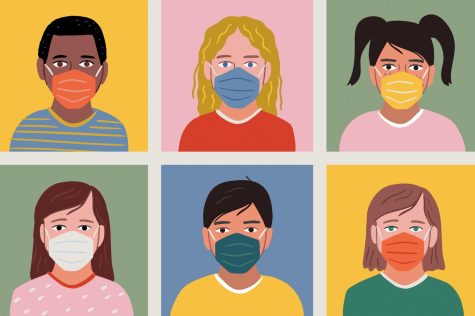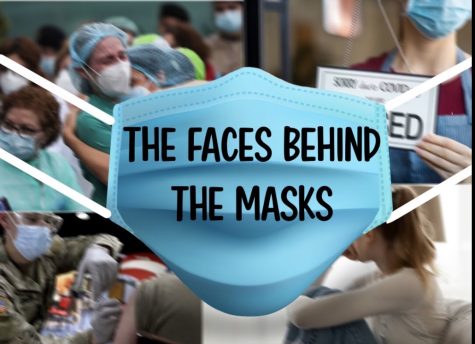The Science Behind Coronavirus
The coronavirus or as it is currently being called, COVID-19, has almost affected around 70 different countries at this moment (March 19). Described as a pandemic, the coronavirus (this time) has been interlaced with our newest technology and the interconnectedness of countries, indicating the effect of how fast the virus has spread. In the past we have seen various outbreaks that have ranged across continents: 1918 Influenza, 2002 SARS Epidemic, 2009 H1NI Flu Pandemic, and the list can go on. Yet, in this case, we are faced with a new frontier. With the mass movement across borders and the specific components of this coronavirus, COVID-19 has already been able to transmit across tens of thousands of individuals. While everyone has either been socially distancing themselves or trying to prevent the further spread of the virus, I feel as if it is important to highlight the medicine or the science behind the coronavirus. Whether it be my own interest in epidemiology or the microbiology of the virus, the key characteristics of COVID-19 has led to destruction in our current state.
Before I begin my deep dive in what makes this COVID-19 unique in its own case, I would like to highlight that I am not a medical professional. I might not be able to explain everything pertaining to the science behind the epidemiology, but I will try my best to clearly illustrate the pertinence of the pandemic.
Part 1: Basic Understanding of Viruses
Viruses are not living. Well, according to the current understanding of viruses, they are not considered living. Instead, viruses are a set of genes that are packaged in a protein containing coat called a capsid. Some viruses have an outer membrane called an envelope

with specific receptors. Now when a virus enters into the human body there are multiple ways that it can infect the individual. First way would be through using the host cell’s own organelles for its proliferation. By using the host cell’s organelles, the virus is able to replicate itself and then lyse the host cell releasing all of the replicated virus phages. The other way that a virus can harm the individual would be through ingraining the virus DNA in the host cell’s DNA. This route takes a little bit more time as the host cell DNA needs to replicate and produce proteins for the host cell to see the effect of the virus. Some examples of this would be HIV as it engrains in the host cell’s DNA and replicates from there. While there are alternatives to viral entry, these two are the most basic and are a solid foundation in understanding the importance of COVID-19.
I would like to circle back to the receptors on the outer membrane of some viruses. There are probably tens or thousands of viruses out in the world, but only certain ones can harm humans. This traces back to the receptors as the human cells can only “accept” certain viruses. On the receptor surface, the human binding receptor can only attach to specific viruses which then can cause human transmission. Think of the surfaces as caramel: they are extremely sticky but only for the correct piece. If the human receptor cannot bind with the virus, then entry or transmission is more unlikely. If receptors are able to bind, then there can be an easier viral entry.
I know, and I apologize. This might be a lot to take in but I have to lay the foundations before we get to the actual information regarding COVID-19. There is one last point I have to make before we can move on…
Reservoirs. Reservoirs are another way of saying where the actual virus lives and reproduces. There are multiple types of reservoirs but in regards to the coronavirus we will be looking at animal reservoirs. Some examples of reservoirs would be bats, gorillas, pigs, and birds. In most cases, the transmissions originate at the reservoirs and then spread to either other animals or to humans.
As we have discussed the basics, let’s get more specific.
Part 2: Origins of Coronavirus
Coronavirus is not quite accurate. Coronavirus pertains to a group of viruses that stem from animal reservoirs. For example, Middle Eastern Respiratory Syndrome is a type of coronavirus. This virus can be transmitted from camels to humans and cause severe respiratory problems and lead to death. The reason why all of these viruses are called coronavirus would be that the structure of the virus receptors looks like a crown and thus creates the name of corona. Currently, there is a confusion of the name of the coronavirus that we are dealing with as some people call it COVID-19 and others SARS-CoV-2. For the purpose of this article, I will be referring to the virus as COVID-19 as it is the more common of the two names. For a clear explanation, SARS is severe acute respiratory syndrome and it refers to the 2003 SARS outbreak in China. The SARS outbreak also was due to a coronavirus and also spread worldwide in 2002. It leads to death in some cases but it was quickly confined at the time and a SARS outbreak has not been reported since 2014. The name for SARS-CoV-2 refers to the similarity between the COVID-19 virus strain and the SARS virus strain.
In these animal reservoirs, it takes time for their virus to transmit to our human receptors. Most of the time the transmission is not great and while it can

harm a few individuals, the viruses are normally not able to transmit human to human. Yet, with the presentation of COVID-19, the natural selection and the evolution of this strain has allowed the virus to not only transmit from horseshoe bats but also allow the spread of the virus through humans. Epidemiologists and other scientists do not only trace the evolution of these strains but the further projections of the viruses that can spread from animals to humans. For example, the H7N9 Avian Flu Strain was able to transmit to humans from chickens, yet the number of human to human transmission has been rare. The instances that are currently highlighted with the Avian Flu stem from the spread of the animal reservoir (chickens) to humans. In this case, the H7N9 does not contain the correct specific binding proteins to correctly transmit between human to human.
So, if other viruses do not spread as easily then, why does COVID-19 have the capability of spreading between humans?
Scientists have known for the past five years of the existence of COVID-19. One study from Nature Medicine from 2015, scientists Vineet D Menachery and others discovered that a SARS like Cluster of Circulating Bat Coronaviruses could cause potential human emergence. In their study, they reversed the genetic system of the SARS-CoV virus and expressed it in a mouse adapted backbone. Their results indicated that the encoding of the spikes in the virus can efficiently use SARS receptors in humans, replicating primarily in human airway cells. The receptor binding domain (RBD) of COVID-19 effectively targets ACE2, a feature on the outside of human cells and indicates a similarity with the SARS virus. This feature allows COVID-19 to not only be pathogenic but also be able to spread between people. The difference between COVID-19 and Ebola would be that COVID-19 can survive on surfaces longer but is it also easier to be able to spread amongst people. Ebola could not contaminate the individual through bodily fluids and blood; whereas, COVID-19 can spread through surfaces, sneezes, open pores, etc. The evolution and the ability to bind on the receptor binding domain of the host human cells indicates the strength of the virus.
So, if scientists knew of the existence of a similar strain of SARS-CoV, then why is it affecting people now?
I guess it was the right time. No one can really predict when a virus “decides” to transmit to humans. In the first original studies of this strain, scientists were not even sure if there was a possibility of human to human transmission. Yet, with time, scientists are able to understand the dangers of viruses and their mechanisms. For the time being, remember social distance and self-quarantine to help slow the progression of the transmission of the virus.

On first glance, the name Defne looks like it is pronounced differently but it is the same as Daphne from Scooby-Doo. Besides writing for Eastside, you...











Isabel • Mar 20, 2020 at 8:33 pm
Hi defne this is awesome good job